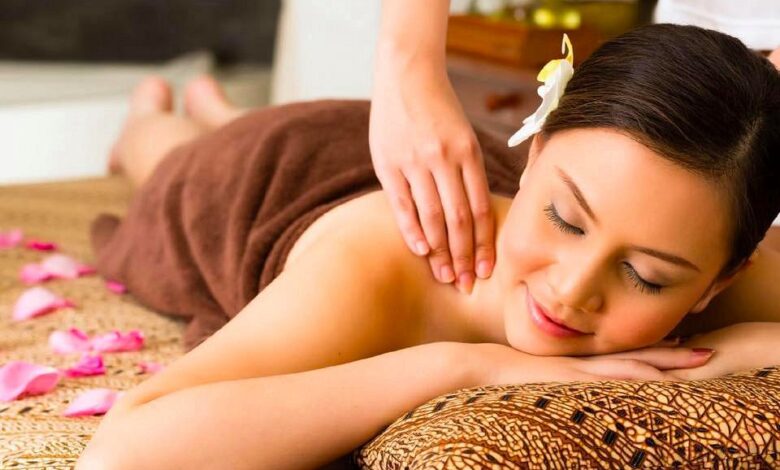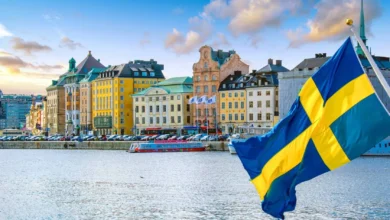Stress Out, Serenity In: A Journey Through 마사지 Culture

In the hustle and noise of modern life, stress is more than just an occasional annoyance—it’s become a constant companion. From endless notifications to tight deadlines and daily responsibilities, our bodies and minds are often pushed to the edge. But what if the solution to all that tension lies not in medication or meditation, but in something far more ancient, human, and deeply therapeutic?
Enter the world of 마사지—massage therapy, the Korean way.
Massage is often thought of as a luxury or a one-time treat, but in Korean culture, it’s woven into the fabric of everyday wellness. It’s not just about pampering—it’s about prevention, healing, and deep restoration. Let’s take a journey through the rich, calming, and transformative world of 마사지 culture—where stress goes out, and serenity flows in.
The Origins of Korean 마사지: More Than a Spa Day
Massage has roots in nearly every traditional healing system around the world. In Korea, it is heavily influenced by traditional Eastern medicine, particularly the concepts of ki (기)—life energy—and meridians (경락)—the energy pathways that run through the body.
In this system, physical or emotional issues are seen as imbalances or blockages of energy. Korean massage focuses on restoring this flow, using acupressure, kneading, stretching, and heat therapy to create balance and harmony.
Massage isn’t just about sore muscles. It’s about whole-body alignment—physically, emotionally, and energetically.
Types of 마사지 You’ll Encounter
In your journey through Korean massage culture, you’ll find many different styles—each with its own benefits. Here are a few of the most popular:
1. Gyeongrak Massage (경락 마사지)
The cornerstone of traditional Korean massage. It uses strong pressure and deep strokes along meridian lines to clear energy blockages, boost circulation, and release tension. It can feel intense, but the results are transformative.
2. Foot Reflexology (발마사지)
This popular treatment stimulates pressure points on the feet that correspond to different organs. It’s incredibly relaxing, surprisingly energizing, and great for those who are on their feet all day.
3. Aromatherapy Massage
Combines gentle massage with essential oils that calm the mind and body. This style leans more toward relaxation and emotional balance.
4. Hot Stone Massage
Heated stones are placed on key points of the body and used to massage tight areas. The warmth promotes deep relaxation and helps loosen stiff muscles.
The Mental and Emotional Benefits of Massage
While massage is known for its physical perks—like relieving back pain or tight shoulders—its effects on the mind are just as powerful.
✨ Reduced Stress and Anxiety
Massage helps lower cortisol, the stress hormone, while boosting feel-good chemicals like dopamine and serotonin. This creates a natural state of calm—no pills required.
Better Sleep
Regular massage therapy can improve sleep patterns by relaxing the nervous system, reducing pain, and releasing mental tension that might be keeping you up at night.
Emotional Release
Ever felt emotional during or after a massage? That’s completely normal. We store emotional tension in our muscles, and massage often helps release what we didn’t even realize we were holding on to.
Inside a Korean Spa: The Full Wellness Experience
To truly understand massage in Korea, you have to visit a jjimjilbang—a traditional Korean bathhouse and wellness center. These 24/7 facilities offer far more than just a massage.
Your journey might look like this:
-
Soak & Steam: Begin with hot tubs and saunas to relax the muscles.
-
Exfoliation (때밀이): A traditional scrub that leaves your skin baby-soft.
-
Massage Session: Choose your preferred style, often performed by skilled therapists trained in traditional techniques.
-
Relaxation Rooms: After your treatment, enjoy a nap, a book, or a bowl of miyeok-guk (seaweed soup) in a cozy rest area.
In Korea, these spas are not occasional splurges—they’re part of a balanced lifestyle. Families, couples, and solo visitors all enjoy jjimjilbangs as a regular form of restorative self-care.
Why the World Is Turning to Korean Massage Culture
With wellness trends growing globally, more people are discovering the value of regular massage—not just for pain relief, but for daily stress management. Korean-style massage is becoming especially popular for its unique blend of deep tissue healing, traditional philosophy, and cultural mindfulness.
What sets Korean 마사지 apart isn’t just the techniques—it’s the intention behind it:
To not just fix the body, but to care for the whole person.
Incorporating Massage into Your Life
You don’t have to live in Korea or visit a spa weekly to experience the serenity of massage culture. Here are some simple ways to bring it into your routine:
-
Monthly Massage Sessions: Schedule time just as you would a doctor or dentist appointment.
-
Self-Massage: Use your hands, foam rollers, or massage tools to target areas like your neck, back, or feet.
-
Create a Spa Vibe at Home: Candles, calming music, and warm oils can turn a simple evening into a mini retreat.
-
Mind-Body Check-ins: Learn to recognize when your body is calling for a break—tight shoulders, fatigue, or tension headaches are often a cue to reset.
Final Thoughts: Letting Go, One Touch at a Time
In Korean massage culture, there’s a quiet understanding: healing doesn’t always come through doing—it comes through letting go.
Letting go of stress.
Letting go of muscle tension.
Letting go of emotional weight we’ve unknowingly carried.
Through skilled hands, steady pressure, and intentional care, 마사지 offers us a return to balance. It reminds us that we’re allowed to rest, to feel good, and to care for ourselves not just in crisis—but every single day.
So, next time the world feels too loud and the weight on your shoulders grows a little heavier, remember: Serenity isn’t far away. Sometimes, it’s just one massage away.
Have you experienced the calming world of Korean massage? Share your favorite treatments or tips below, and let’s keep spreading the peace. ♀️♂️

